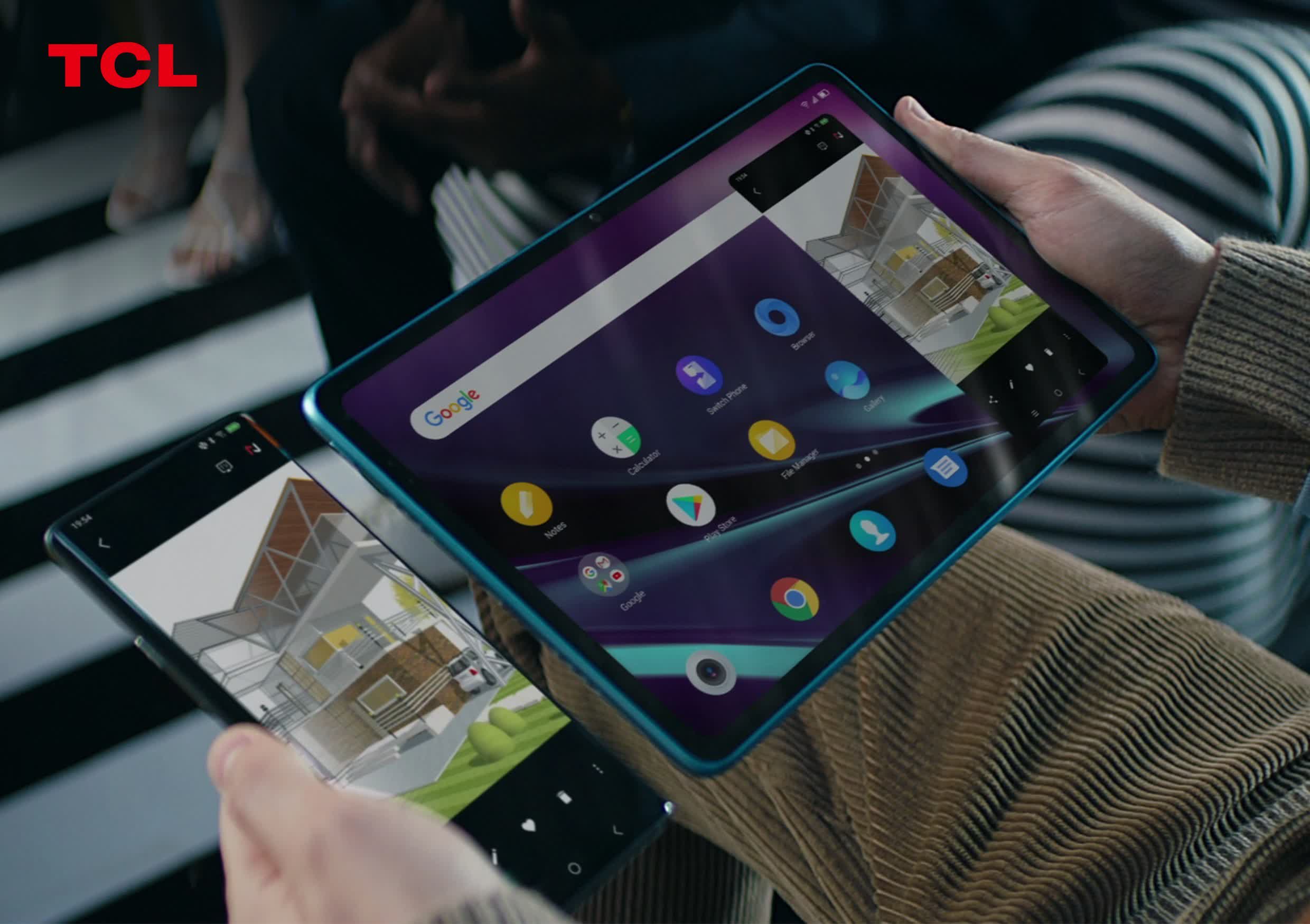In brief: At MWC 2021, TCL announced the release of its Nxtwear G smart glasses coming in July. The wearable will initially be available in Australia for $899 (about $680 US), but other regions will follow soon. During the event, the company also announced Multi-Screen Collaboration, which allows users to share screens seamlessly between multiple devices.
There are plenty of companies developing smart glasses, including Razer and Amazon, but none have yet created a killer product. Now TCL expects to do just that with the upcoming Nxtwear G smart glasses.
Whether you want to watch a movie, play a game, or work, the TCL Nxtwear G glasses allow you to do so in a small private space right in front of your eyes. Featuring dual-Micro OLED Sony panels with an FHD resolution and supporting 3D 4K content, these glasses simulate a 140-inch widescreen display with a 47 pixels-per-degree resolution.
Nxtwear G smart glasses also pack built-in speakers for added immersion. However, using earbuds or a headset might be a better option.

Using the USB-C DP cable attached to the glasses, TCL's smart glasses can be connected to any phone, tablet, or laptop with the appropriate interface thanks to its plug-and-play functionality. Moreover, there's a capsule case included to transport the glasses in your bag or backpack and protect them from a fall, scratches, or any other physical damage.
Despite all the technology used inside the glasses' compact and portable design, they weigh just over 130g, with the USB-C cable weighing 30g alone.

TCL also showed a screen sharing feature that promises to deliver quick and easy cross-device broadcasting. With Multi-Screen Collaboration, TCL phone owners may also share files, music, videos, apps, photos, and messages with a compatible Windows 10 laptop or PC, tablet, or TV.
For now, the TCL 20 Pro 5G is the only device listed to support Multi-Screen Collaboration, but TCL promised the feature would come to other devices. In addition, the glasses will include support for this feature in an over-the-air software update that's coming at a later date.
Nxtwear G glasses will debut in Australia sometime in July, with a more global release later this year. Based on exchange rates, it looks like US customer could expect a price tag of about $680.
https://www.techspot.com/news/90190-tcl-showcases-nxtwear-g-smart-glasses-featuring-dual.html